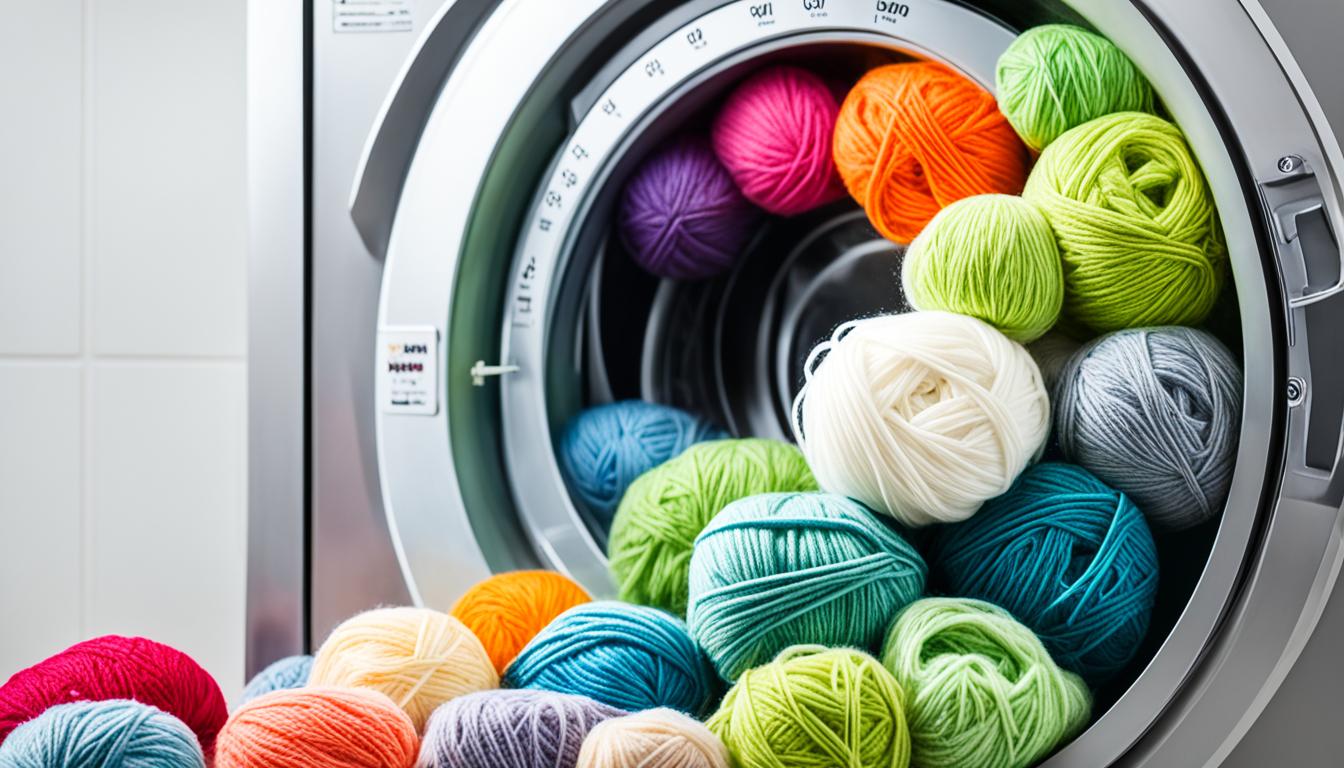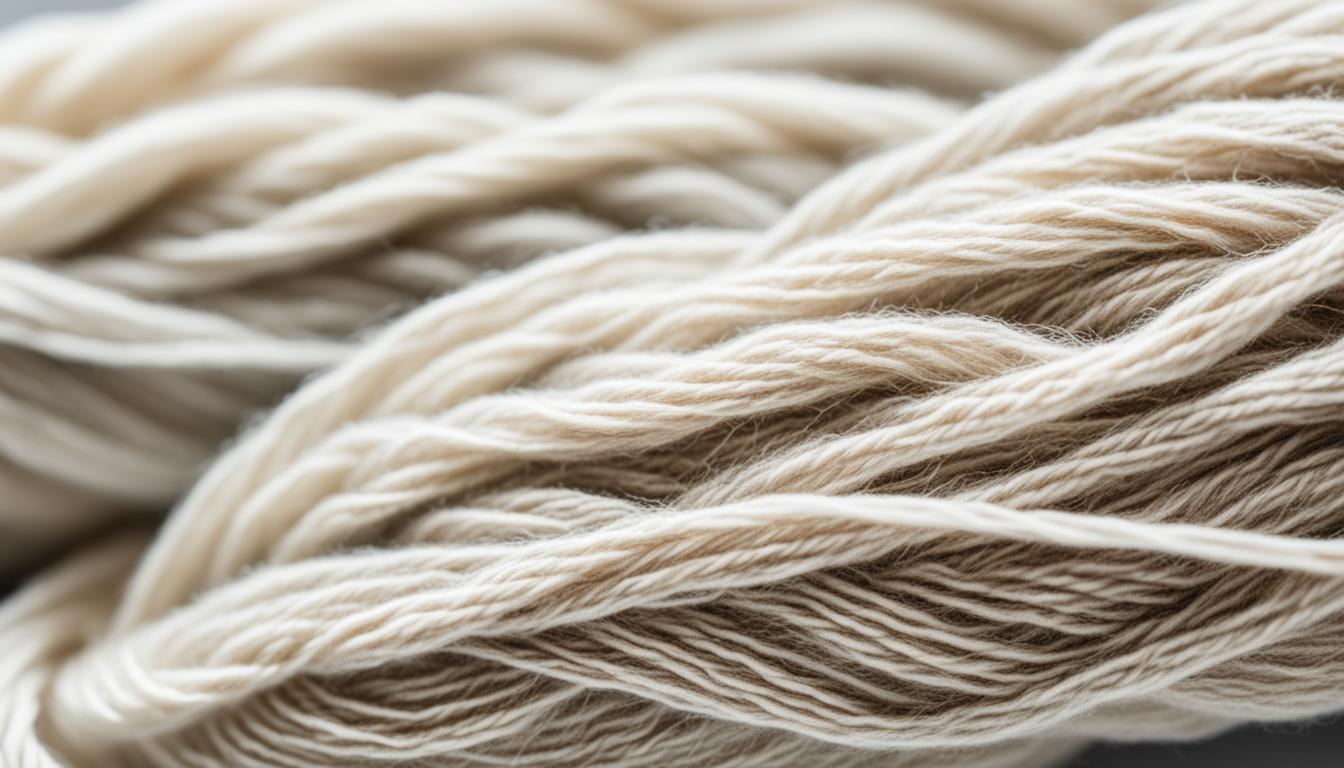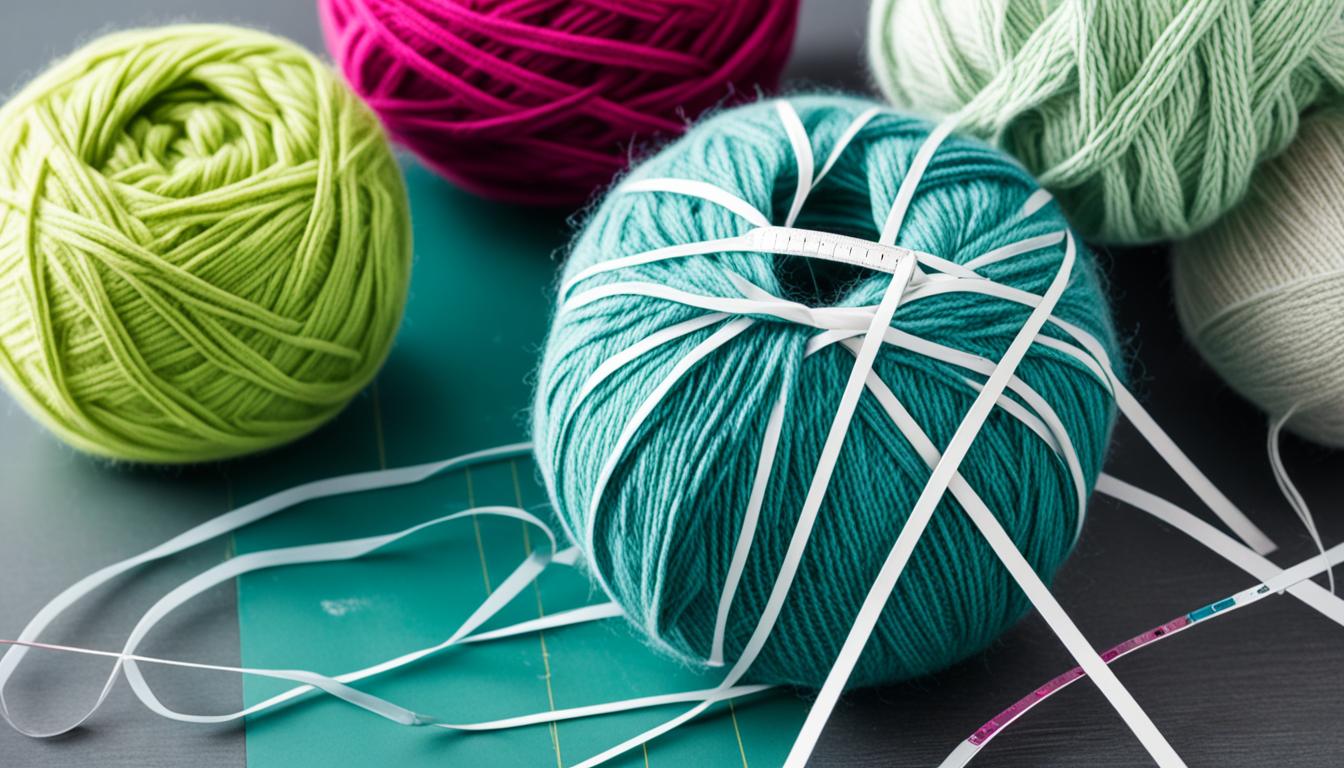When it comes to knitting or crocheting a project, one of the most crucial considerations is the washability of the yarn you select. After investing hours of creativity and effort, it’s essential to ensure that your creation will stay in top condition for years to come. The question remains: Is all yarn washable?
The answer might surprise you. While some yarns can be easily tossed into the washing machine, others require a more delicate touch. Understanding the washability of each type of yarn is essential to maintain its quality and longevity. But don’t worry, we’re here to guide you through it all.
Key Takeaways:
- Not all yarn is washable; some require special care to maintain their quality.
- Washability depends on the fiber type; wool, cotton, merino, and mohair require different care techniques.
- Proper care methods can help minimize shedding and pilling.
- Blocking can give your yarn project a more finished look.
- Always follow the care instructions provided by the yarn manufacturer.
Yarn Care Instructions for Different Fiber Types
When it comes to caring for your yarn, it’s important to understand that different fiber types require different care instructions. Each type of yarn has its own unique characteristics and needs, and knowing how to properly care for and maintain them will help ensure their longevity.
Wool Yarn
Wool yarn, like the high-quality options available from Loopy Mango, requires special care to keep it in excellent condition. It is recommended to dry clean or hand wash wool yarn in cold water using a gentle detergent. Avoid hot water or strong agitation, as this can cause felting or shrinking. After washing, gently squeeze out excess water and lay the garment flat to dry. This will help maintain the shape and integrity of the wool fibers.
Cotton Yarn
Unlike wool, cotton yarn is more durable and can withstand machine washing. For cotton yarns like Big Cotton and Summer, it is safe to wash them in a machine using cold water. However, to prevent excessive shedding, it’s best to tumble dry on low heat or lay the garments flat to dry. This will help maintain the softness and structure of the cotton fibers.
Merino Wool Yarn
Merino wool yarn, such as the popular Merino No.5 and Dream options from Loopy Mango, requires similar care to regular wool yarn. It is best to dry clean or hand wash merino wool yarn in cold water using a gentle detergent. Avoid hot water or strong agitation, as this can cause felting or shrinking. After washing, gently squeeze out excess water and lay the garment flat to dry. This will help preserve the delicate and luxurious nature of the merino wool fibers.
Mohair Yarn
Mohair yarn, like the sumptuously soft Mohair So Soft, requires special care to minimize shedding. It is recommended to hand wash mohair yarn in cold water using a gentle detergent. After washing, gently squeeze out excess water and lay the garment flat to dry. To further reduce shedding, you can freeze the garment in a plastic bag for a few hours and then give it a vigorous shake. Avoid wearing mohair pieces with fabrics that may cause the fibers to grab onto them.
Remember, always read the care instructions provided by the yarn manufacturer to ensure proper maintenance. By following these yarn care instructions for different fiber types, you can keep your yarns looking beautiful and ensure they last for years to come.
Dealing with Fiber Shedding and Pilling
When it comes to yarn, shedding and pilling are common issues, especially with natural fiber yarns. At Loopy Mango, we recognize that shedding is to be expected with all our yarns, but we have some tips to help you maintain your knitted garments effectively.
Minimizing Fiber Shedding
To minimize shedding, we recommend dry cleaning merino wool garments. Dry cleaning helps reduce the chance of fibers loosening and shedding during the cleaning process. However, if you prefer to wash your garments at home, we suggest handwashing them in cold water with a gentle detergent specifically formulated for wool. Gently squeeze out excess water and lay the garment flat to dry.
Proper care methods can help minimize shedding, but some amount of shedding may still occur with certain yarns.
Preventing Pilling
Pilling is the formation of small fiber balls on the surface of the yarn. It can happen with any type of yarn, especially heavily used or rubbed areas. To combat pilling, we recommend using a pair of large blade scissors to carefully trim the fuzz balls. Regularly inspect your garments and remove any visible pills to keep them looking fresh.
A Note on Fibers
It’s important to note that shedding and pilling can occur with any yarn, regardless of the quality or fiber type. However, different fibers may have varying levels of shedding and pilling. Natural fibers, such as wool or mohair, tend to shed more than synthetic fibers, like acrylic or nylon. This is due to the natural properties and structure of the fibers.
Remember, shedding and pilling are normal characteristics of yarn and do not necessarily indicate poor quality.
By following these tips, you can manage and maintain your yarn projects effectively, keeping them looking their best for years to come.
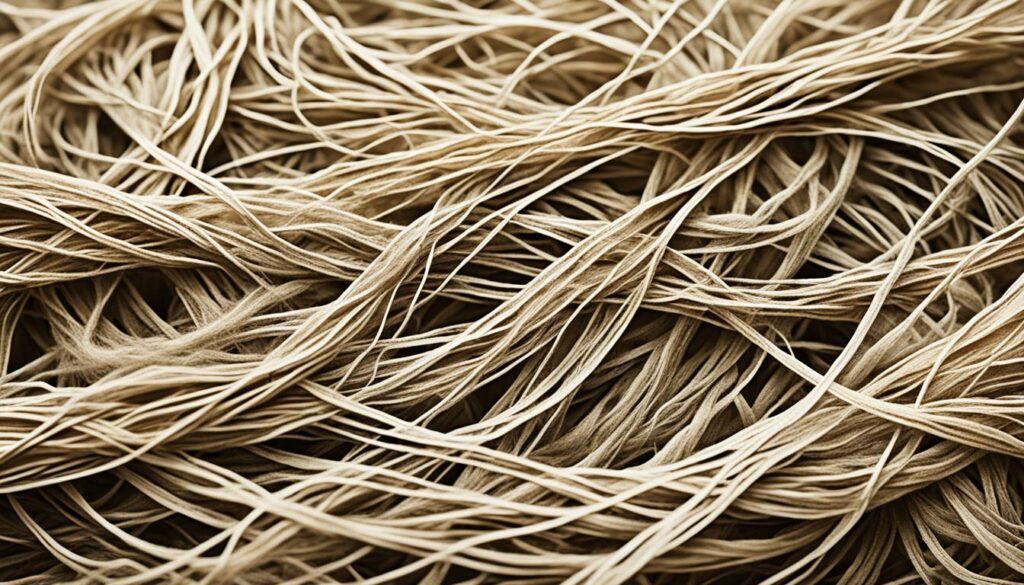
| Fiber Type | Shedding | Pilling |
|---|---|---|
| Wool | Some shedding | May pill with heavy use |
| Mohair | Higher shedding | Pills with friction |
| Cotton | Minimal shedding | Minimal pilling |
| Synthetic | Negligible shedding | Negligible pilling |
Blocking Your Yarn Project
At Loopy Mango, we design our projects to be wearable right off the needles, eliminating the need for blocking. However, there may be instances where blocking is required to achieve the desired finished look. Whether you’re working on a delicate lace shawl or a cabled sweater, proper blocking techniques can enhance the shape and drape of your knitted masterpiece.
Blocking is the process of shaping and relaxing the yarn to ensure it maintains its form and structure. It involves wetting or steaming your project and then laying it out to dry, allowing the fibers to settle into their intended shape. This process can help align stitches, even out tension, and open up lace patterns.
When it comes to blocking yarn, it’s crucial to follow the recommended techniques for the specific fiber you’re working with. Each yarn has unique properties and may require different blocking methods. It’s always best to refer to the guidelines provided by the yarn manufacturer to ensure optimal results.
If you’re new to blocking, here are a few techniques to consider:
- Wet Blocking: This method involves fully immersing your project in water, allowing the fibers to absorb moisture. Gently squeeze out the excess water without wringing or twisting the yarn. Lay the wet project on a blocking mat or towels, shaping it to the desired dimensions. Use T-blockers or rustproof pins to secure the edges or maintain a specific shape. Allow the project to air dry completely before removing the blockers or pins.
- Steam Blocking: Steam blocking is ideal for delicate fibers or projects that require extra precision. Use a wet cloth or towel to cover your project and then hover a steam iron or handheld steamer over the fabric without touching it directly. The steam will penetrate the yarn, relaxing the fibers. Gently shape your project as needed and allow it to dry completely before removing the towel.
- Spray Blocking: Spray blocking is useful for smaller projects or when you need precise control over the blocking process. Fill a spray bottle with lukewarm water and mist your project thoroughly. Shape the project to the desired measurements, ensuring even tension. Allow it to air dry before removing the blockers or pins.
Remember, the key to successful blocking lies in patience and proper handling. Take your time to shape your project accurately and allow it to dry completely before handling. Blocking can transform your knitted piece from a cozy work in progress to a beautifully finished garment.
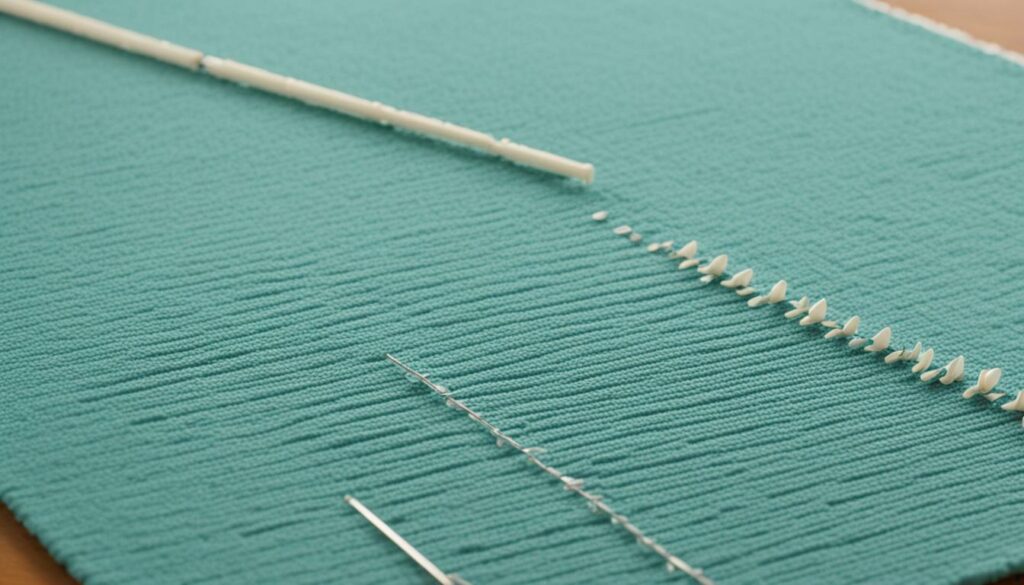
Pro Tips:
1. Always read the yarn manufacturer’s blocking instructions before proceeding.
2. Test your blocking method on a swatch or inconspicuous area of your project first to ensure it doesn’t alter the yarn or colors.
3. Blocking wires and rulers can be useful tools for achieving precise measurements and straight edges.
4. Don’t be afraid to experiment with different blocking techniques to see which one works best for you and your project.
Care Tips for Mohair So Soft
Mohair So Soft is a luxurious yarn known for its incredible softness and fuzzy texture. To keep your Mohair So Soft garments looking their best, follow these care tips:
1. Minimizing Shedding
Mohair yarns, including Mohair So Soft, may shed initially due to loose fibers. To minimize shedding, try this simple trick:
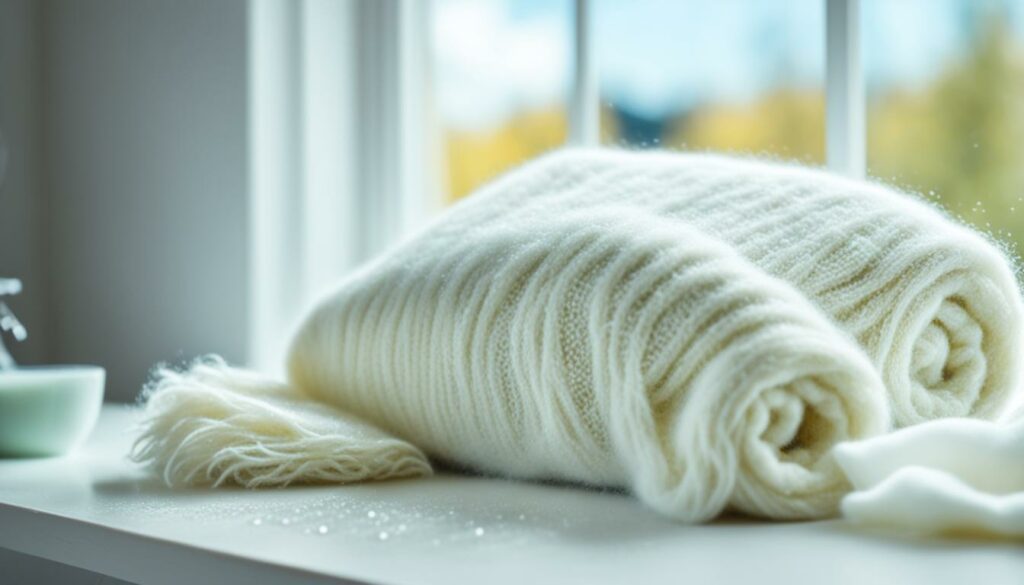
- Place the garment in a plastic bag and seal it.
- Put the bag with the garment in the freezer for a few hours.
- Remove the hardened fibers by giving the bag a vigorous shake.
This method helps to harden the loose fibers and make them easier to remove, reducing shedding and maintaining the yarn’s softness.
2. Choosing the Right Fabrics
When wearing mohair pieces, it’s important to consider the fabrics you pair them with. Mohair fibers have a tendency to grab onto other materials, especially those with a sticky or rough texture. To prevent this, opt for ‘non-sticky’ fabrics like silk or smooth cotton when wearing garments made from Mohair So Soft. This will minimize the chance of fibers sticking to other materials and help maintain the yarn’s appearance.
3. Care Instructions
To clean your Mohair So Soft garments, follow these care instructions:
| Cleaning Method | Instructions |
|---|---|
| Dry Cleaning | Take your garment to a professional dry cleaner experienced in handling delicate materials like mohair. They will know how to properly clean and care for your Mohair So Soft pieces. |
| Hand Washing | Fill a basin or sink with cold water and a gentle wool detergent. Gently submerge your garment and agitate it lightly to distribute the detergent. Avoid rubbing or wringing the yarn. Rinse the garment thoroughly with cold water. Gently squeeze out excess water, taking care not to twist or wring. Lay the garment flat on a clean towel and gently roll up the towel to absorb more water. Finally, reshape the garment and lay it flat to dry. |
By following these care tips, you can keep your Mohair So Soft garments looking delightful and ensure their longevity.
Care Tips for Big Cotton and Summer Yarns
When it comes to caring for your Big Cotton and Summer yarns, we have some handy tips to keep them looking fresh and feeling soft. Both of these yarns are 100% cotton and can be safely washed in a machine, making them easy to care for. However, there are a few things to keep in mind to ensure their longevity.
Machine Washing
To wash your Big Cotton or Summer yarn project, we recommend using cold water on a gentle cycle. This will help maintain the integrity of the fibers and prevent any unnecessary stretching or shrinkage. Avoid using hot water or harsh detergents, as this can damage the yarn and cause it to lose its softness.
Tumble Drying
After washing, you can safely tumble dry your Big Cotton or Summer yarn project on a low heat setting. This will help fluff up the fibers and restore their natural softness. However, it’s important to keep in mind that cotton yarns can shed, especially during the first few washes. To help minimize shedding, you can use a fabric softener sheet or a lint roller to remove any loose fibers.
Test Swatch
Before washing the entire garment, we recommend testing your washing and drying method on a small swatch of yarn. This will allow you to see how the yarn reacts and ensure that it maintains its shape and texture. Once you are satisfied with the results, you can confidently wash the entire garment.
Laying Flat to Dry
For best results, we advise laying your Big Cotton or Summer yarn project flat to dry. This will help prevent any stretching or distortion of the shape. You can lay it on a clean towel or a drying rack, making sure to reshape the garment if needed. By allowing it to dry naturally, you will help preserve the original softness and texture of the yarn.
Preserving Natural Softness
Both Big Cotton and Summer yarns are un-mercerized and minimally processed, which means they retain their natural softness and elasticity. By following these care tips and using proper washing and drying techniques, you can ensure that your garments stay as soft and comfortable as when you first created them.
Remember, caring for your yarn is just as important as the knitting or crocheting process itself. By giving your Big Cotton and Summer yarns the care they deserve, you can enjoy the beauty and comfort of your handmade garments for years to come.
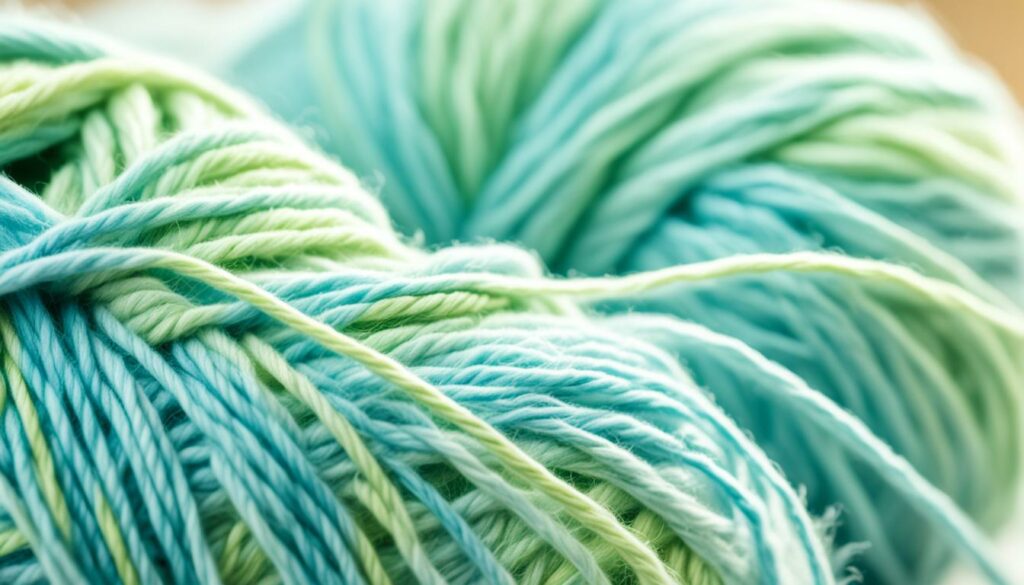
| Care Tips | Big Cotton | Summer |
|---|---|---|
| Machine Wash | ✔️ | ✔️ |
| Tumble Dry | ✔️ | ✔️ |
| Test Swatch | ✔️ | ✔️ |
| Lay Flat to Dry | ✔️ | ✔️ |
Care Tips for Merino No. 5 and Dream Yarns
When it comes to maintaining the quality of your knitted garments made from Merino No. 5 and Dream yarns, proper care is essential. As both of these yarns are made from 100% merino wool, they require delicate handling to ensure longevity and prevent shedding.
We recommend two primary care methods for Merino No. 5 and Dream yarns: dry cleaning and hand washing in cold water. Before washing the entire garment, it’s crucial to test the washing and drying method on a small swatch to guarantee desirable results.
Exposing merino wool to heat or agitation can cause it to felt, so it’s best to avoid hot water and machine washing. Instead, fill a basin or sink with cold water and add a mild detergent specifically designed for wool. Gently submerge the garment and agitate it by hand to remove any dirt or residue. Avoid wringing or twisting the yarn, as this can lead to stretching or distortion.
After washing, carefully rinse the garment in clean, cold water to remove all traces of detergent. Squeeze out excess water gently without twisting or wringing. To dry, lay the garment flat on a clean towel or on a drying rack, away from direct sunlight or heat sources. Reshape the garment if necessary, smoothing out any wrinkles or creases.
To further promote the longevity of your Merino No. 5 and Dream yarn projects, consider storing them in a cool, dry place, away from possible sources of moisture, such as basements or attics. Always follow the care instructions provided by the yarn manufacturer for optimal maintenance.
Avoiding Felting
Felting occurs when wool fibers interlock and shrink together, resulting in a dense, matted fabric. To prevent felting, it’s crucial to handle merino wool with care. Avoid exposing the yarn to fluctuating temperatures or hot water, as this can encourage felting. In addition, refrain from vigorously agitating or rubbing the yarn during the washing process. By following these precautions, you can help preserve the integrity and softness of Merino No. 5 and Dream yarns.
“Proper care is crucial to maintain the quality of your Merino No. 5 and Dream yarn projects. By dry cleaning or gently hand washing in cold water, you can ensure the longevity and durability of these delicate merino wool fibers.”
We understand the importance of caring for your precious yarn investments. By following these care tips, you can enjoy your Merino No. 5 and Dream yarn projects for years to come, with their softness and beauty retained through proper maintenance.

Care Tips for Big Loop Yarn
When it comes to caring for Big Loop yarn, which is made from 100% merino wool, it’s important to follow some specific care tips to ensure its longevity and maintain its softness and quality. While merino wool is known for its exceptional warmth and luxurious feel, it requires delicate care to prevent felting and preserve its beautiful texture.
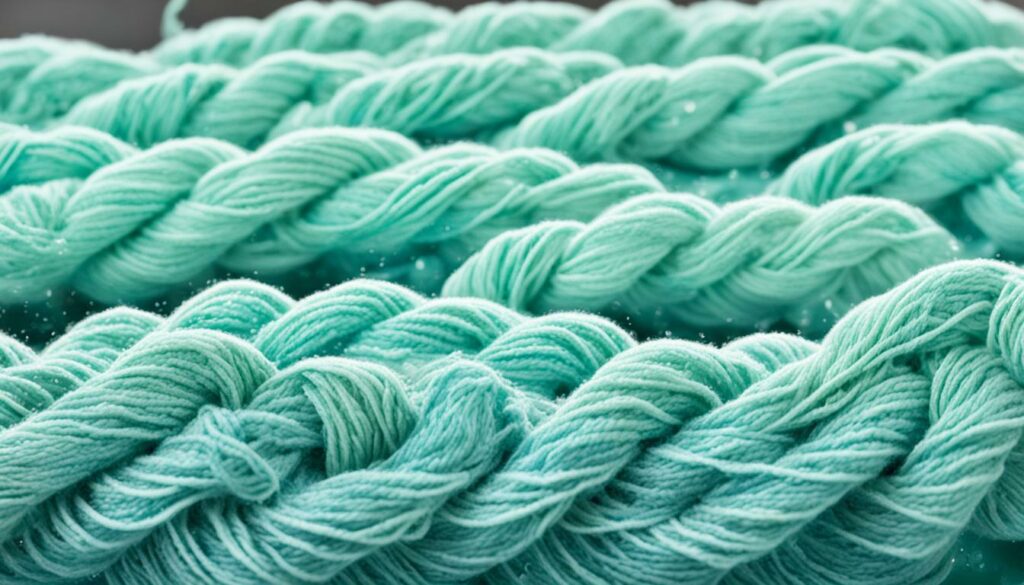
Loopy Mango recommends two main methods for cleaning Big Loop yarn: dry cleaning or hand washing in cold water. Dry cleaning is an ideal option for those who prefer to leave the task to professionals, as it ensures the safest and gentlest care for delicate wool fibers. However, if you choose to hand wash, make sure to use cold water to avoid any heat-related damage.
Before washing the entire garment, it’s crucial to test any washing and drying method on a small swatch of the Big Loop yarn. This allows you to assess the effect of the chosen method without risking damage to the entire project. By doing this, you can ensure that the care routine won’t cause any unwanted changes to the fabric.
It’s important to note that wool fibers are prone to felting when exposed to heat and agitation. Therefore, it’s essential to avoid hot water and machine washing when caring for Big Loop yarn. Instead, opt for gentle hand washing and lay the garment flat to dry. This will help maintain the quality of the yarn and prevent any unwanted shrinking or felting.
By following these care tips, you can enjoy your Big Loop projects for years to come. The softness and warmth of this luxurious merino wool will continue to impress, making your handmade creations a source of joy and comfort.
Conclusion
Caring for yarn and maintaining its quality is crucial for preserving the longevity of your knitted garments. Whether you have machine washable yarn or more delicate fibers, it’s important to follow the care instructions provided by the yarn manufacturer. By doing so, you can ensure that your yarns stay fresh and durable for years to come.
To maintain the quality of your yarn, we recommend following proper care techniques. Hand washing your yarn in cold water and laying it flat to dry can help prevent damage. Avoid exposing your yarn to heat and agitation, as this can cause felting and decrease the lifespan of your garments.
Before washing the entire garment, it’s always a good idea to test any washing or drying method on a small swatch. This way, you can see how the yarn reacts and make any necessary adjustments to achieve the desired result.
By incorporating these yarn care tips into your routine, you can keep your knitted creations looking their best. Whether you’re a seasoned knitter or just starting out, proper yarn care is essential to maintaining the quality of your projects.
